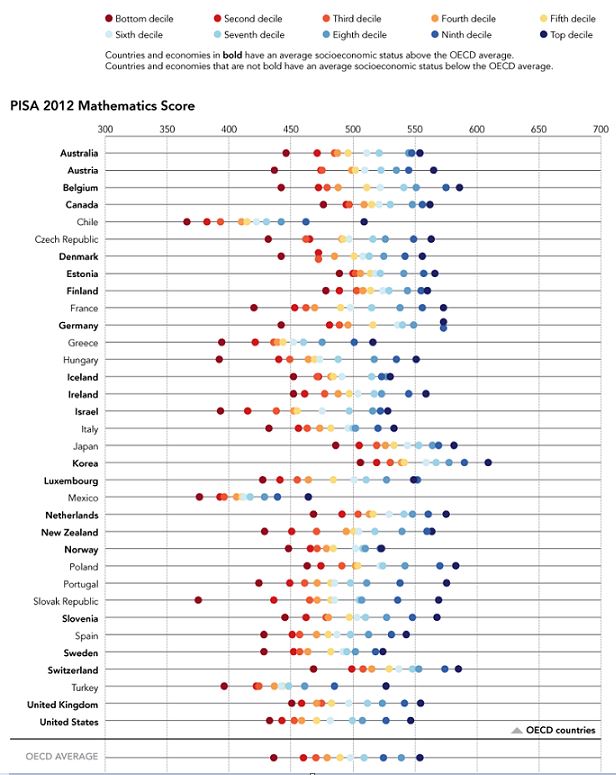When it comes to large data sets like that of the PISA exam,
the first look is always to see who’s on top and who’s not. Now that researchers have had a chance to slice the
test’s data differently, we are able to take a close look at
what’s going on between economic deciles. Turns out, there are places where wealthy students’ math scores still lag and where being poor doesn’t necessarily mean you can’t have access
to a good education.
The ultimate finding, unearthed by OECD’s Pablo Zoido, is
that students around the world from the wealthiest decile groups are not necessarily more
competitive on the international scale compared to their economically
disadvantaged counterparts.
When looking specifically at how the US stacks up
internationally, our wealthiest students aren’t performing as well as they should be considering how much of an economic advantage they hold over top decile
students in other countries.
Here’s a fantastic graphic from the World
Post that sums up the data:

